Sharing is caring!
If you don’t or can’t do a dedicated poetry unit can/should you still do poetry? The answer is YES! A loud, resounding yes! You can include poetry in your next novel study in so many different ways and with ease!
I use poetry all the time to introduce or complement novel study units in English courses, especially when I’m looking to include more diverse voices into the curriculum. But you might be asking yourself how do I include poetry in a novel study? What are my options? Luckily poetry is so versatile that including it will be a cinch!
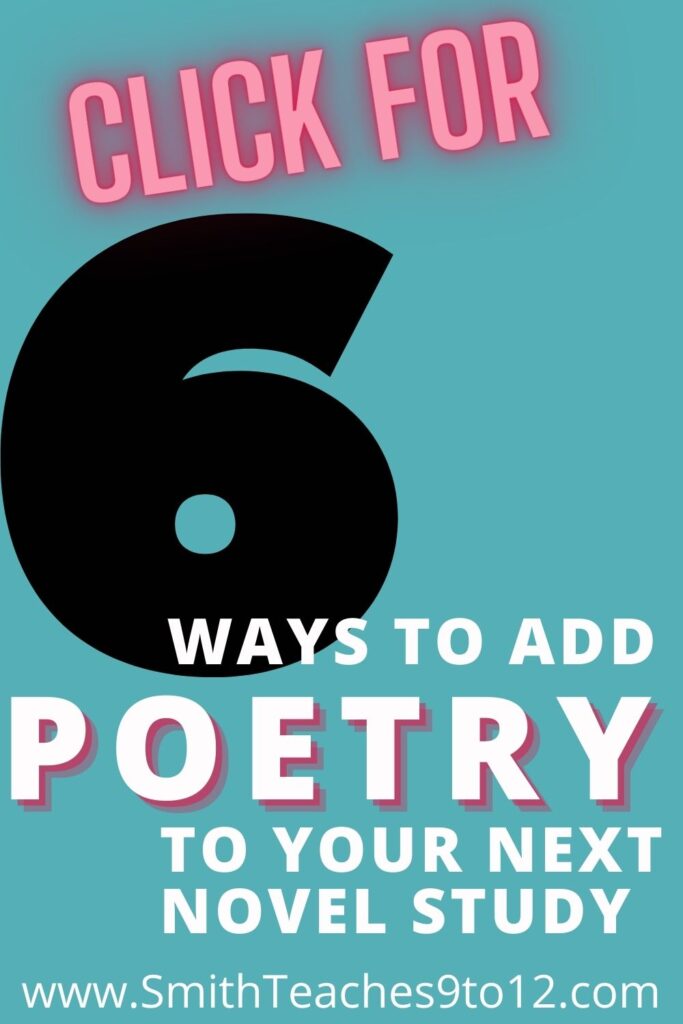
Read on for ways to include poetry in the next novel study you do with your students in secondary ELA.
Introducing essential questions, big ideas, or theme

Use poems based on the essential questions of the unit or focus on a theme or any of big ideas in the novel you’ll address in the unit. You can do this as a pre-reading activity as stations in small groups. Have students predict aspects of the novel based on the inclusion of these poems.
Use big paper with the poems in the center and allow space for students to write around the poem. Students can discuss their ideas in writing and then shift to a small or large class discussion. As a final step, you can return to the same poems in the middle or at the end of the novel study to update ideas and review the initial predictions.
TEACHER TIP: Have students write in different colors and then include their name on the sheet in the same color. As you circulate you can see the level of participation with a quick glance at colors rather than relying just on who is writing in that moment you’re there to observe. Accountability game changer!
For a unit on coming of age novels consider using poems about different stages of life – childhood, adolescence, adulthood. Brainstorm some big ideas or keywords related to each stage. Provide students with at least three different poems, with the titles removed, and have students categorize each poem based on the content of the poem.
A full lesson to complement any coming of age novel study. Examine coming of age concept through 22 suggested poems in order to define terms, explore, analyze, and categorize poems, then synthesize with poetry creation. Digital and printable. FULL Teacher notes, lesson guide, and answers.
Before and during reading opportunities

You could choose a poem that’s related (or only tangentially related, or not related at all!) to the text being studied in order to practice a skill or introduce a concept that will be relevant during the novel study.
Poetry can be used for exploring:
- Time periods – Choose a poem that is written by someone else in the same time period. Studying Shakespeare? Choose a poem by him or someone else writing during the Elizabethan age such as Edmund Spencer with an excerpt from The Faerie Queene or Walter Raleigh with his fantastic poem “A Farewell to False Love” (this would be a great companion piece to Romeo and Juliet or Twelfth Night) or just about anything by John Donne (“The Flea” is a personal favorite).
- Genre – Choose a poem in a similar genre as the novel you’ll study. When teaching Mary Shelley’s Frankenstein I focus on gothic poetry both classic and contemporary as a lead-in to the unit of study. You can read more about options in this post.
- A writer’s craft moves and style – Choose a series of poems by the same poet or from a group of poets. For example, you could choose poets of The Harlem Renaissance and examine what similarities and differences exist in style with their poems. You could look at poems written about the same topic or even a specific event to see what makes each poem distinct. The Academy of American Poets’ search engine is quite useful for this type of search.
- Inference skills – Use a poem to practice reading between the lines for deeper meaning since this skill is always useful for novel studies. Nearly any poem could work in this instance but providing some choice or a series of poems with increasing difficulty might be a good way to scaffold the skill and differentiate for the learners in your class.
- Word choice/diction and the use of connotation and denotation – Choose a poem that provides opportunities to study word choice. This will help with analysis and close reading of the novel students end up studying. In this instance, you might even have students read a poem and then write their own; they can then explain in a reflection about their own word choice to focus on connotation and denotation in their own work that should be familiar to them.
Want a way to teach a bit of grammar using a simple and engaging poem? This lesson about the poem “Wrap” by American living poet Aimee Nezhukumatathil is a great addition for any time of year or to honor AAPI Heritage Month in May. The lesson includes a mini presentation of the poet and poem, a gamified and differentiated mini-lesson about homonyms, plus extension and early finisher activities.
Examining character or setting through a different point of view

For character you might choose poems that relate to a character trait rather than a particular character. Students can then do a compare/contrast activity with the novel’s character and the selected poem. This is a great warm-up and skills practice if the unit end-goal is a comparison essay.
For setting, you might choose a poem that’s focused on the time period, the place, or reflects the social elements or zeitgeist of the time being explored. For example, if you’re studying The Great Gatsby then include a variety of poets from before and during the 1920s. Here you can then add in diverse voices by including poets from the Harlem Renaissance, which has its roots in the same time period. This would reflect all three elements – time period, place, and social elements.
Sometimes choosing poems means focusing on one or two elements of setting within a single poem. For example, if you’re studying Of Mice and Men you might include a poem about The Great Depression, either written during the 1930s or just after. An option for this could be Pantoum of the Great Depression by Donald Justice. For a connection to place you could use United by Naomi Shihab Nye, which includes the mottos of different states in the US; this poem could help to explore or to situate Lennie and George’s travels, or to explain more generally the focus on mobility for economics of the time period.
You might have students watch/read Rudy Francisco’s “My Honest Poem” in order to write one based on a character. It might be a matter of using a template if students need some added guidance.
An updated version of a “Where I’m From” poem that students can use to examine any character from the text.
Get your FREEBIE lesson and template to help you and your students.
Exploring a topic through a different lens

This option provides the best opportunity to diversify the texts and writers, including poets, who may be part of a required curriculum. You might incorporate short texts such as poetry using Dr. Rudine Sims Bishop’s theory of mirrors, windows, and sliding glass doors.
Consider what is a topic in the text that only focuses on one point of view, and look for a poem that can shed light on a different point of view of that same topic. This is where under-represented voices can add dimension to a novel study and make it more contemporary for students. You can search by theme and/or occasion as well as keywords at the Academy of American Poets’ website. Using the work of living poets is also a great option here! Check out Teach Living Poets for lists of poets, poems, and topics, plus lesson ideas!
This could also mean using a literary lens to examine a text. Before jumping into that literary theory with the novel you’re studying, consider using a short text in the form of a poem to practice first. Introduce the theory, use guiding questions to examine a poem, work solo or in small groups, but make an exit ticket part of the lesson. This way you’re able to tell which students comprehend and which don’t. A go-to question for an exit ticket is to ask students to tell you what they think is the most important aspect of the theory that applies to the text and why. Even if students have discussed this in small groups you’ll be able to see if it’s an answer explained in the same way across multiple responses; if so, that means groupthink applies and it’s unlikely the student understood enough to use their own thoughts.
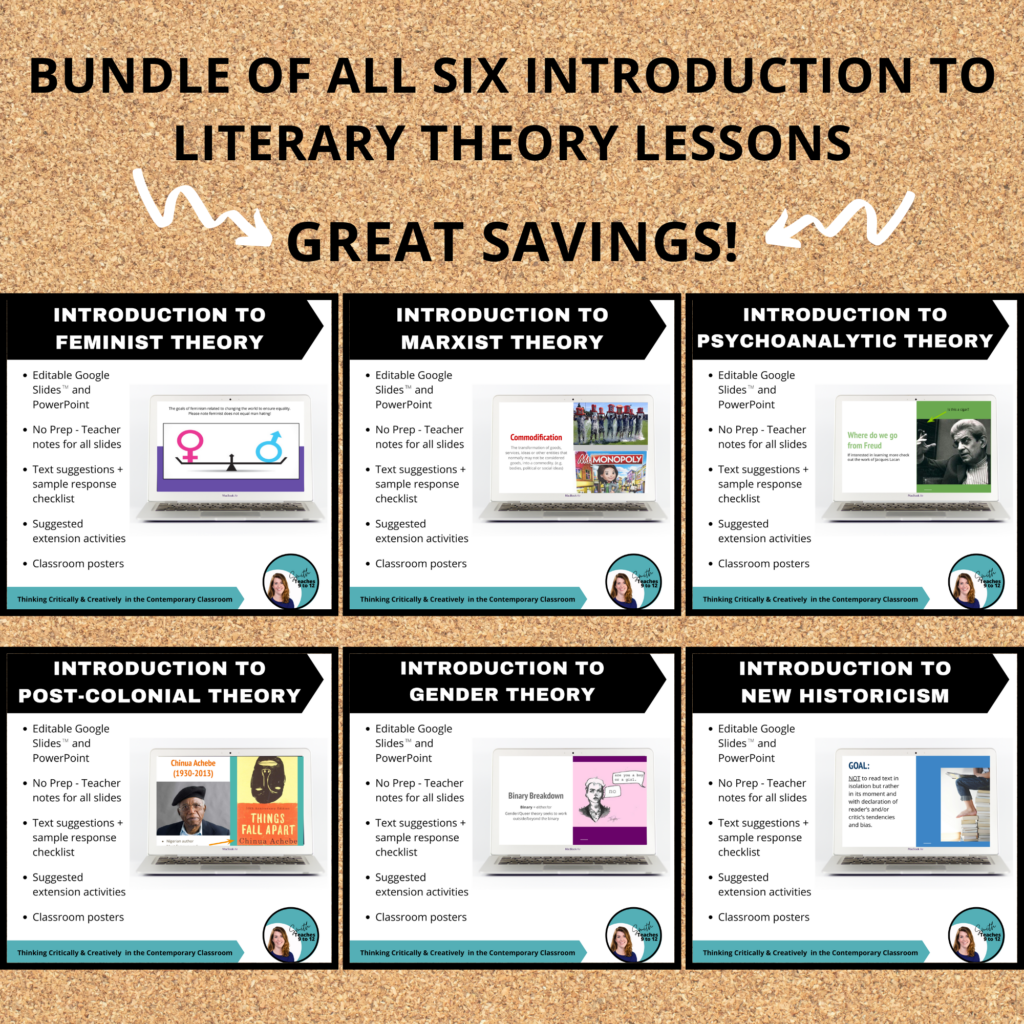
Check out the bundle of lessons that introduce six different literary lenses. You can also get them individually depending on your focus for the unit. Each lesson has an editable presentation, extensive teachers notes, and suggestions for poems to fit with each and every theory.
Making connections – text-to-text and text-to-world

Getting students to connect with literature is important, though not necessarily a dealbreaker for a novel study. We all know that not all students will like or even enjoy the novels picked for class but making connections, not necessarily personal ones, to a novel is integral to making deeper and richer connections. This is where poetry can work to enhance students’ understanding of a story, its characters, theme, and even its (mis)representation of the world beyond the story!
In grade 9 one of the book choices for the literature circles unit about identity is The Hate You Give by Angie Thomas. When we read the novel we also connect to contemporary poetry including work by Danez Smith or a variety of spoken word poems too. Button Poetry is an invaluable resource for spoken word pieces. Contemporary pieces emphasize the issues from Starr’s life, including police brutality (“what the dead know by heart” by Donte Collins), or code switching (“3 Ways to Speak English” Jamila Lyiscott), or protest, resistance, and empowerment (check out these options).
Check out this lesson to practice comparison skills. It presents the poet, her full poem, plus two more and guides students to analyze individually and to compare and contrast as a group. The poems are accessible in topic and language so students can focus on skills development!
Options to extend the lesson from 1 to 5 days.. Full teacher lesson plan with answer keys!
A model or inspiration for creative student writing

This is another way to get students to connect more deeply with a novel in order to enhance understanding. It is also an opportunity to include poetry not just in terms of analysis but in creation as well.
Include a poem, poet, or form of poetry that you want students to mimic related to the main text being studied. For example, you might have students read odes – traditional and contemporary – in order to then dive into character and write an ode from the perspective of one character.
Activities that are adaptable for any novel study. Create a Conversation Poem for two characters, a character profile with a Phone Number Selfie Poem, a ‘visual’ of the setting with Ekphrastic Poetry. Plus so many more options with these activities as Google Slides, PowerPoint, or printable PDFs.
There really are so many options for poetry! It can be used in a myriad of ways to expand your curriculum, to introduce new and diverse voices, and to practice all sorts of literacy and literary analysis skills. I hope you choose to include poetry in your next novel study!

Related articles:
- 12 Short Short Films for ELA
- In Order For Students To Become Better Writers You Must Teach Critical Thinking from Missy at A Better Way to Teach
- 5 Brilliant Strategies for Close Reading from Jeanmarie at McLaughlin Teaches English

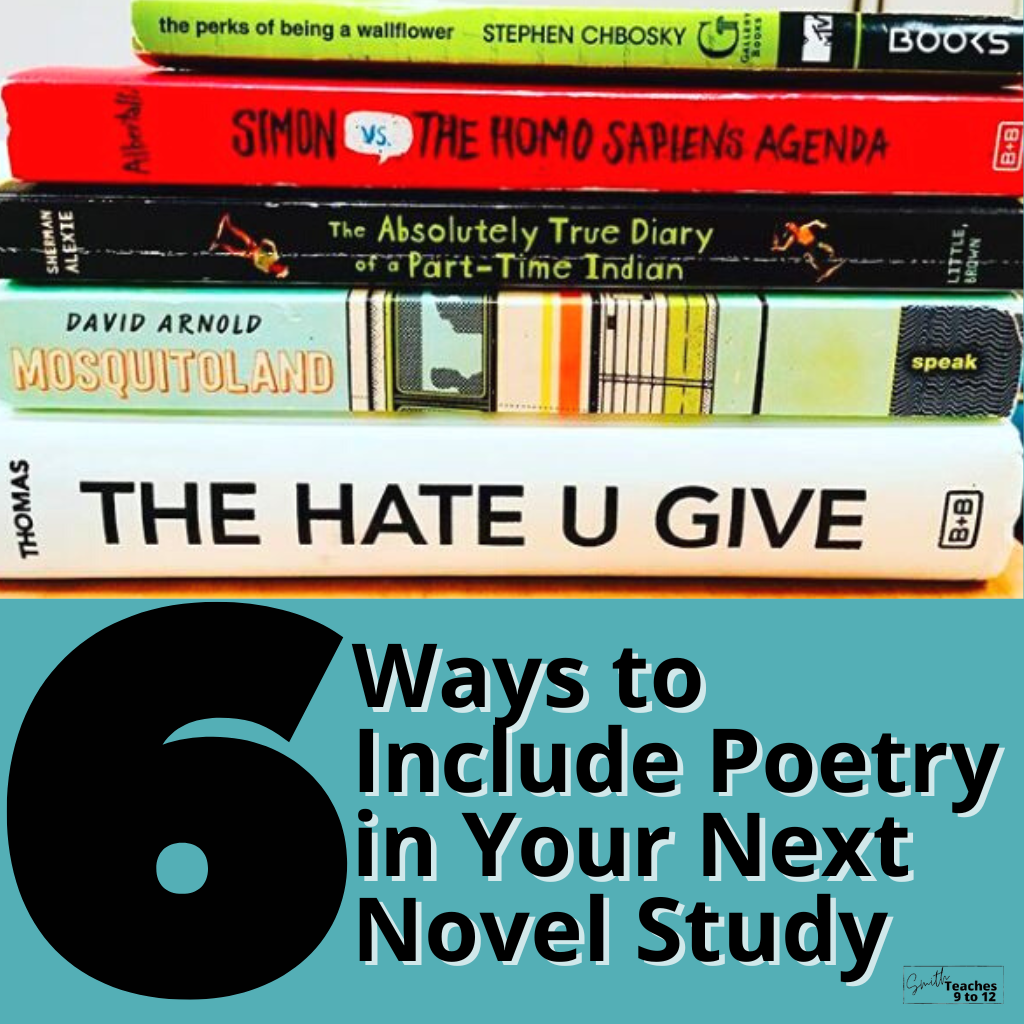
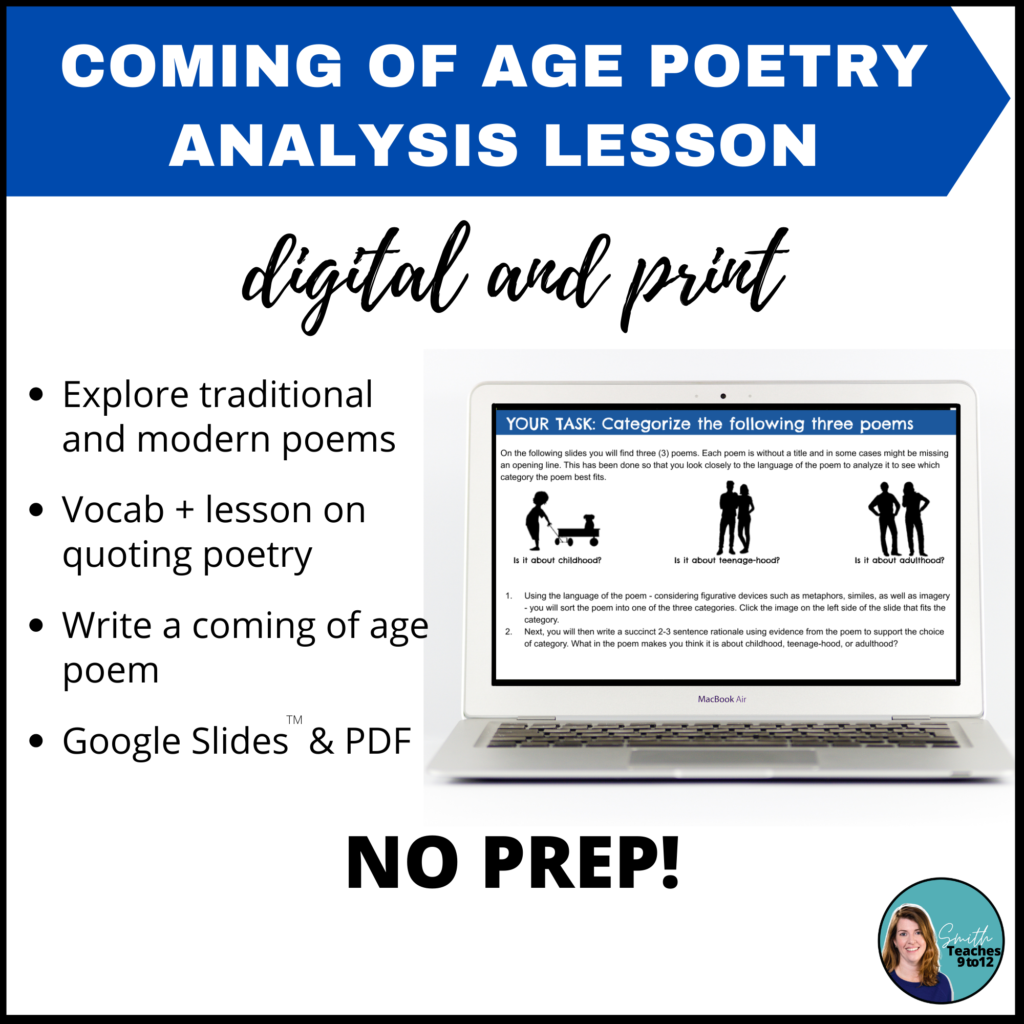
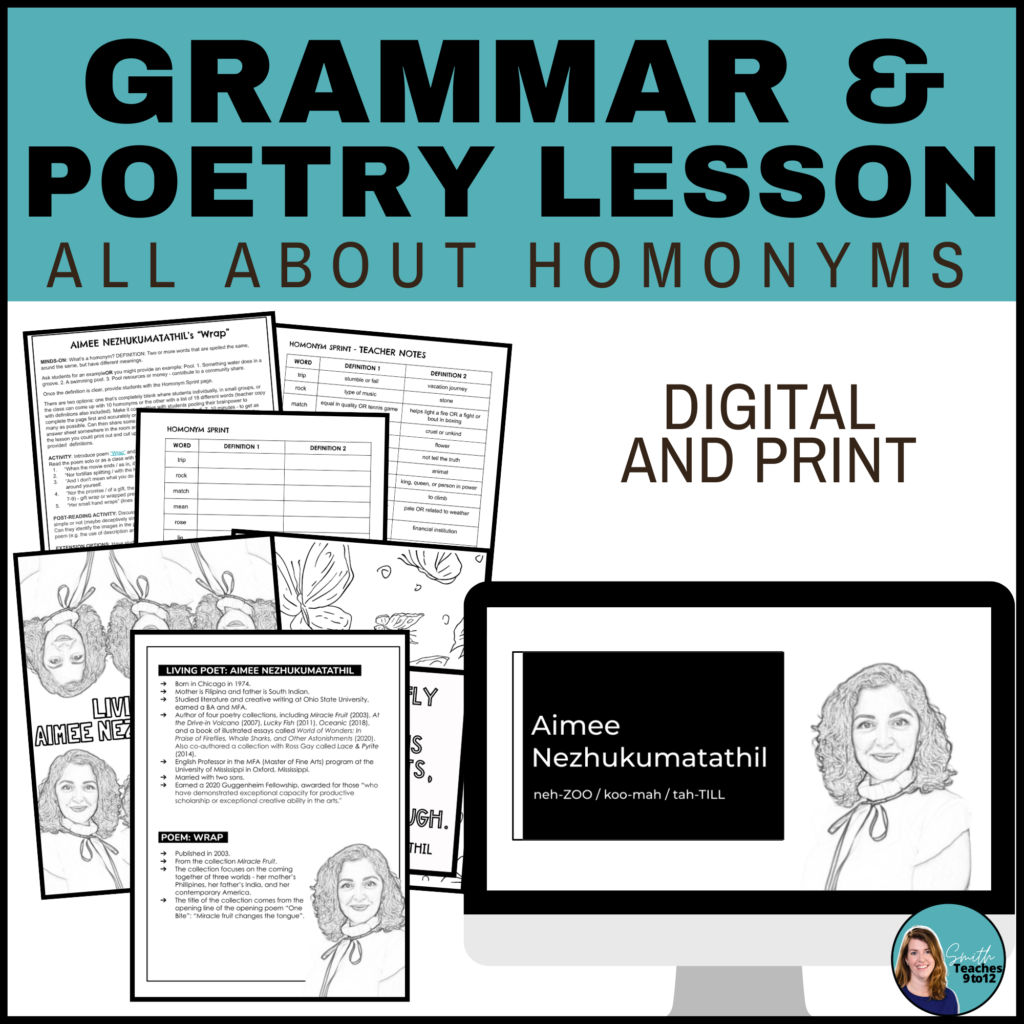
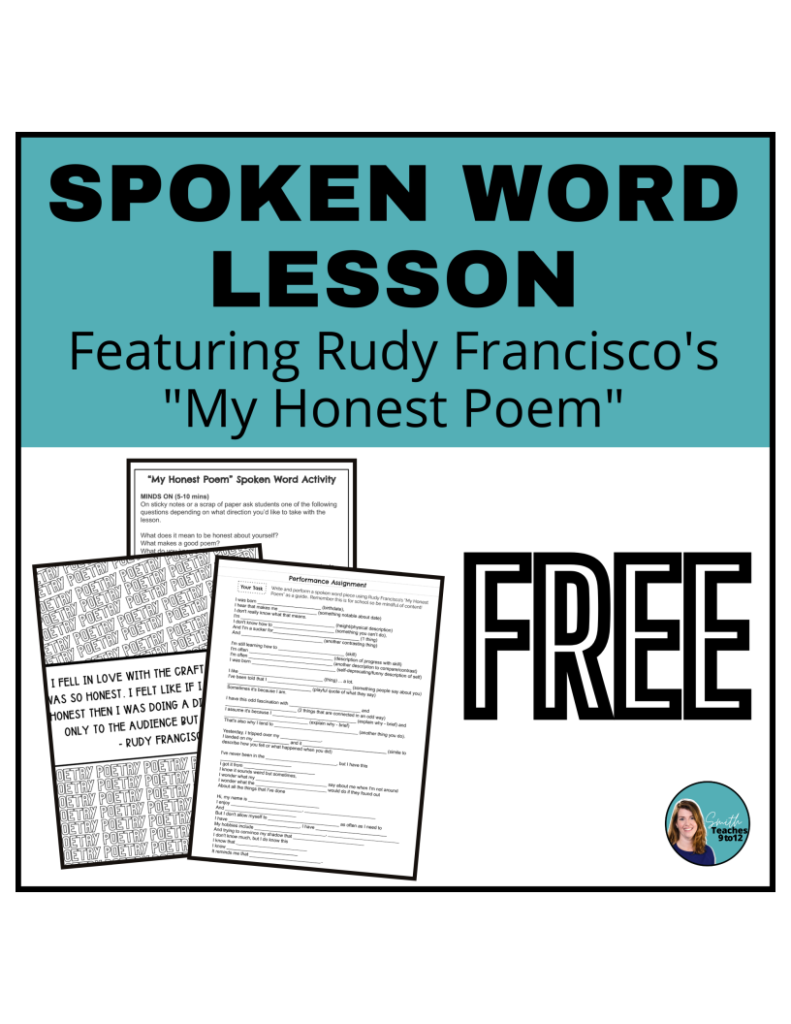
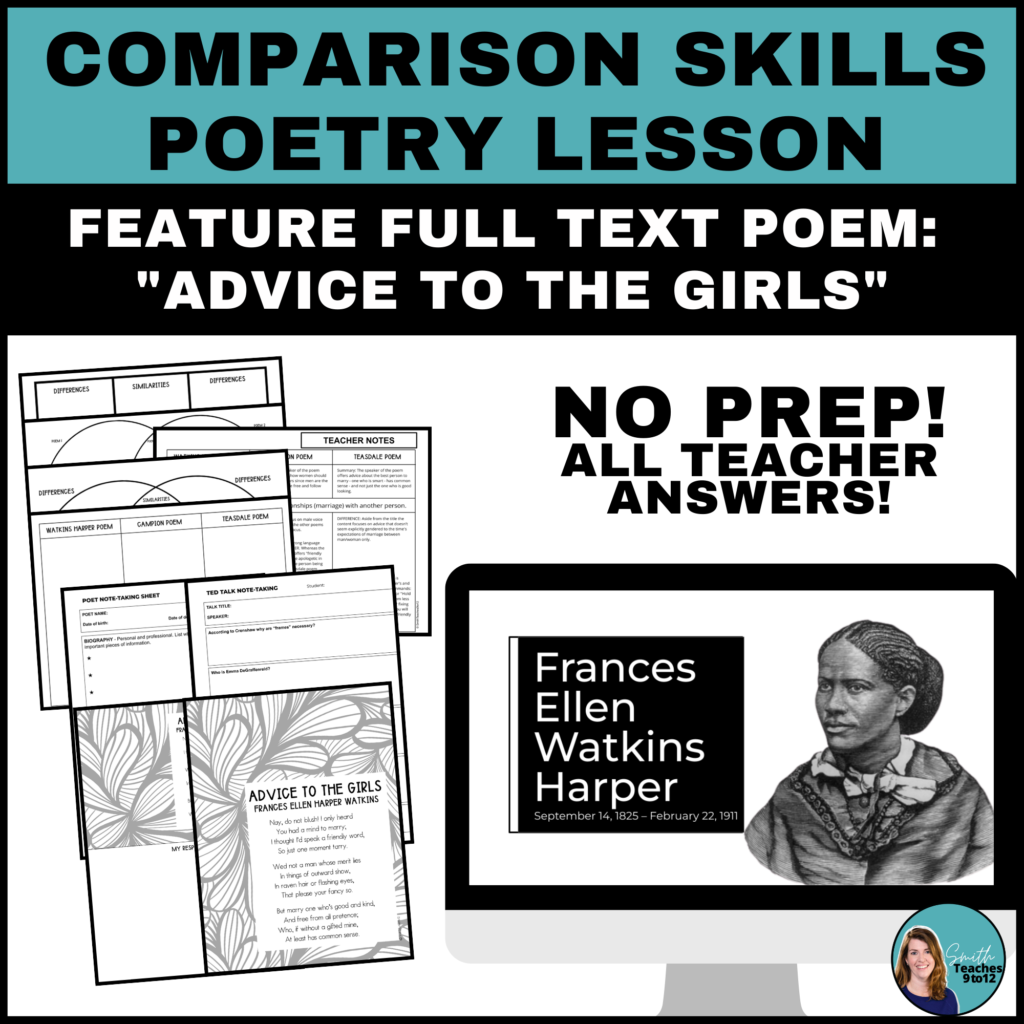
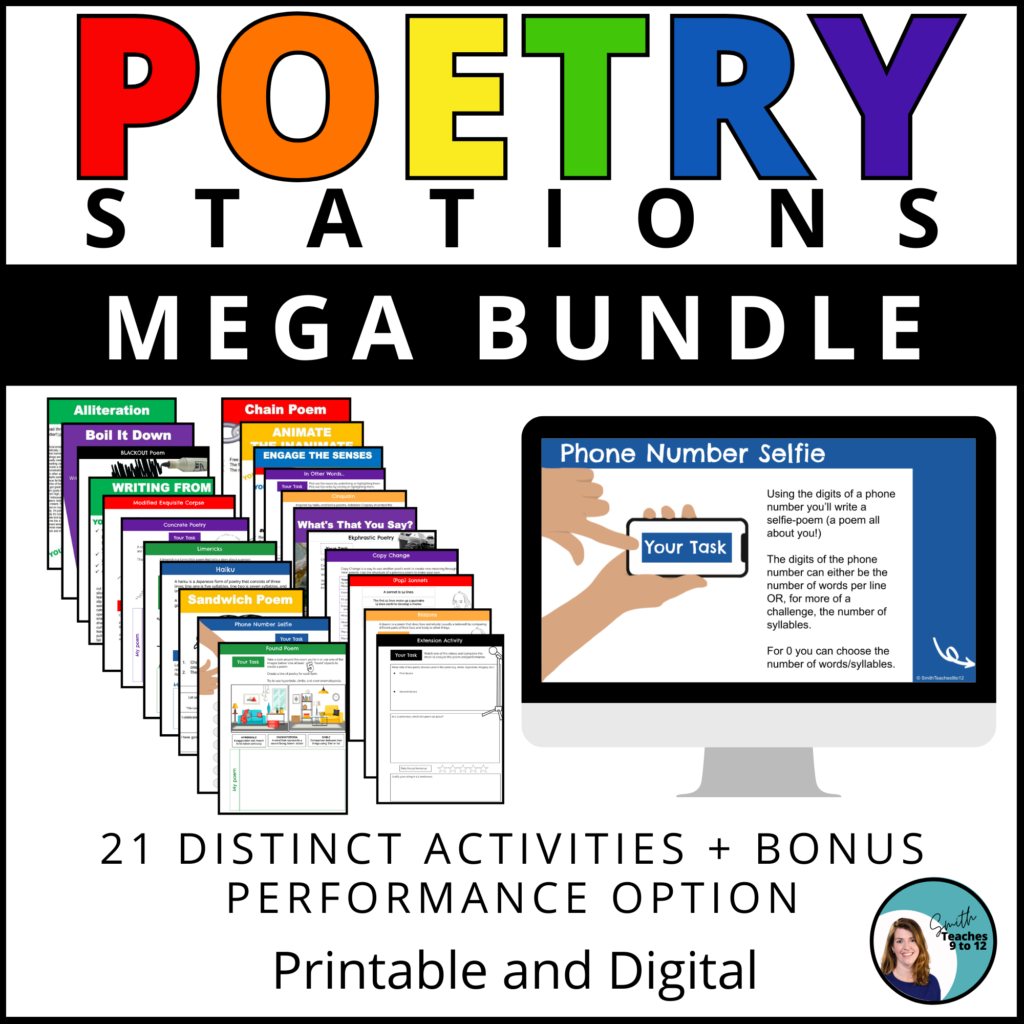
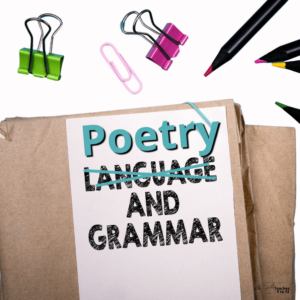
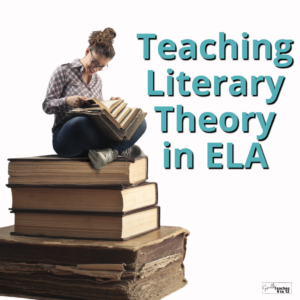
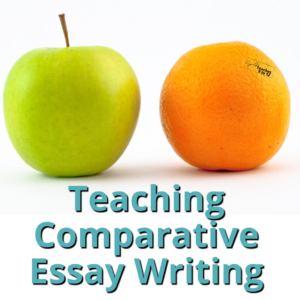
4 Responses